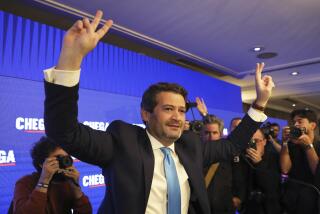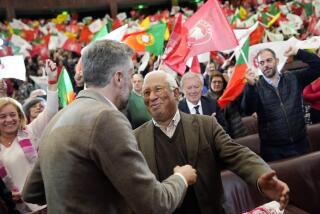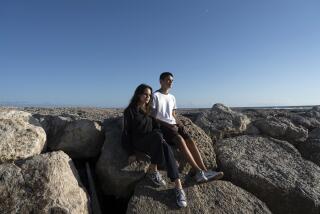‘The Last Day’ by Nicholas Shrady
May 11, 2008
The earthquake that leveled Lisbon in 1755 shook more than the ground, journalist Nicholas Shrady reveals in this lively account. It flattened religious and philosophical certainties as well, and it was an equal-opportunity disturber of the peace, discrediting the reactionary orthodoxy that held Portugal in an iron grip even as it challenged the optimistic creed of the rationalists seeking to loosen that grip all over Europe.
When the first of three devastating temblors struck at midmorning on All Saints’ Day, Nov. 1, virtually everyone in Lisbon was attending Mass. Survivors who struggled out of the ruined churches found flames sweeping the rubble, and those who made their way to the river Tagus, thinking to escape by ship, were confronted by “a vast body of water, rising as it were, like a mountain.” In less than five minutes, three successive tsunamis had washed away what little the earthquake and fire had left.
“A natural disaster of like proportions had not visited Europe . . . in recorded memory,” Shrady writes. Portugal’s vocal, powerful clergy had no doubts about what to make of the catastrophe. “[W]hat a great harvest of sinful souls such disasters send to Hell!” declared Jesuit Father Gabriel Malagrida. “It is scandalous to pretend the earthquake was just a natural event. . . . It is necessary to devote all our strength and purpose to the task of repentance.”
This seemed harsh, given that visitors to Lisbon frequently noted its residents’ “unparalleled piety.” It wasn’t exactly voluntary, Shrady’s cogent résumé of Portugal’s history reminds us. The state worked hand-in-glove with the dreaded Holy Office of the Inquisition to ensure that Portuguese minds were unsullied by any new ideas that might shake their faith. Only the “foreignized” intellectuals called Estrangeirados seemed to notice that the heterodox works of Jean-Baptiste Colbert, John Locke, David Hume, Descartes, Newton et al., assiduously banned from Portugal’s Jesuit-run schools, had sparked scientific, financial and technical innovations that were transforming such nations as Britain and France into modern, economically vibrant states. Pious Portugal stagnated, with the gold and slaves pouring in from its colonies enriching a parasitic aristocracy while everyone else lived in medieval squalor.
Chief among the Estrangeirados was Sebastião José de Carvalho e Melo, Portugal’s foreign affairs minister, who had no patience with Malagrida’s apocalyptic preaching. Carvalho needed the demoralized refugees streaming into the countryside back in Lisbon to rebuild the city, not down on their knees repenting. He moved quickly to secure the support of King José I, who was cowering indecisively in the relatively unscathed royal retreat at Belém. “What is to be done to meet this infliction of divine justice?” quavered the distraught monarch. “Bury the dead and feed the living,” replied Carvalho in a classic (albeit possibly apocryphal) statement of Enlightenment pragmatism.
“In one of the only coherent decisions he made during the crisis,” writes Shrady, “José I promptly vested his minister with the authority to confront the catastrophe by whatever means he saw fit.” Carvalho quickly dispatched troops to fight the fire, search the ruins for survivors and summarily hang looters. He ordered soldiers to round up all able-bodied men and march them back to Lisbon to clear debris and build temporary shelters. He forbade any permanent new construction until a master plan could be drawn up for the city. A month after the earthquake, he examined five options laid out by chief engineer Manuel da Maia and chose the most radical: to raze the entire Baixa, Lisbon’s historic center, and build in its place a modern city with wide streets, buildings constructed within strict design parameters, a sewage system, proper drainage -- “an enlightened use of space in keeping with the latest notions of urban planning,” as Shrady capably summarizes.
It took 20 years, but by the time the rebuilt Baixa was inaugurated in 1775, Carvalho had swept away obstacles more substantial than rubble. An attempt on the king’s life in 1758 enabled him to mercilessly prosecute and execute some of Portugal’s most reactionary nobles. A few Jesuits were implicated in the plot; Carvalho seized the opportunity to expel the entire order. With the path to reform ruthlessly cleared, he enacted laws to modernize schools and government administration, ease censorship, outlaw slavery, fund factories and foster a dynamic economy.
These were substantial achievements, but history is never a straightforward march toward better times. When José’s devout oldest daughter took the throne as Maria I in 1777, she dismissed Carvalho and instituted a period of reaction.
The earthquake that had (temporarily) loosened the Catholic Church’s hold on power also posed discomfiting questions for the philosophers who inspired Carvalho. Shrady devotes some astute pages to the most famous and enduring response to the
The Last Day
Wrath, Ruin, and Reason in the Great Lisbon
Earthquake of 1755
Nicholas Shrady
Viking: 240 pp., $25.95
More to Read
Sign up for The Wild
We’ll help you find the best places to hike, bike and run, as well as the perfect silent spots for meditation and yoga.
You may occasionally receive promotional content from the Los Angeles Times.










